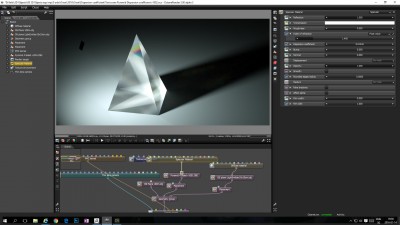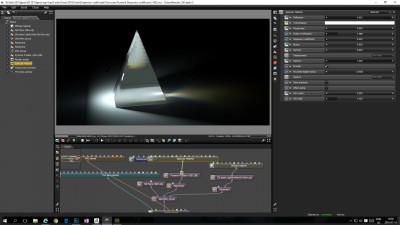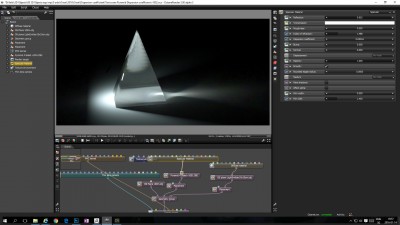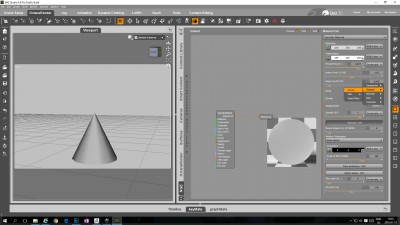bepeg4d wrote:Hi linvanchene,
your disoersion values are way too high

In real life, look at the water in a trasparent plastic bottle to understand the effect.
from the
OctaneRender documentation:
- Dispersion Coefficient (dispersion_coefficient)
The dispersion in OctaneRender™ is based on Cauchy’s equation which has two terms: A which is the index of refraction and B which is the dispersion coefficient. Increasing the value increases the amount of coloration and dispersion in the object and in caustics.
Here is a quick link to
wikipedia, use the C values instead of the B values in the table at the end of the page for realistic results

ciao beppe
Salut Beppe
Thank you a lot for pointing me in the right direction.
In addition to the links you posted reading up on dispersion in general helped me as well.
https://en.wikipedia.org/wiki/Dispersion_(optics)
- - -
After some basic understanding it seems a test scene wih a pyramid, a ground plane and a small light emitter is more suited to observe the effect.

- Pyramid Test scene IOR 1.450 Dispersion coefficient 0.01342

- Pyramid Test scene IOR 1.488 Dispersion coefficient 0.030

- Pyramid Test scene IOR 1.488 Dispersion coefficient 0.00354
A difference between 0.030 and .00345 shows the effect in color of those smaller value changes.
- - -
If someone wants to experiment further with the same scene I attached the ORBX in the .zip file:
- - -
- - -
Look values up or use a menu with example parameter settings for often used material types?
I guess I never really bothered about actually understanding what the Dispersion coefficient does because in the DAZ Studio OctaneRender plugin there are presets to choose for different type of materials.
So instead of looking up index of refraction or Dispersion coefficient values I was just able to select values of a similar material directly from a menu when editing the parameters.

- Menu selection for sample IOR and Dispersion Coefficient values
Learning and understanding the values we use may be important in the long run.
Nevertheless new users might be overwhelmed with a lot of information already.
It could be helpful to have some menu selections for Index of Refraction and the Dispersion Coefficient in OctaneRender standalone as well so users can quickly select some standard values for commonly used materials like glass etc.



